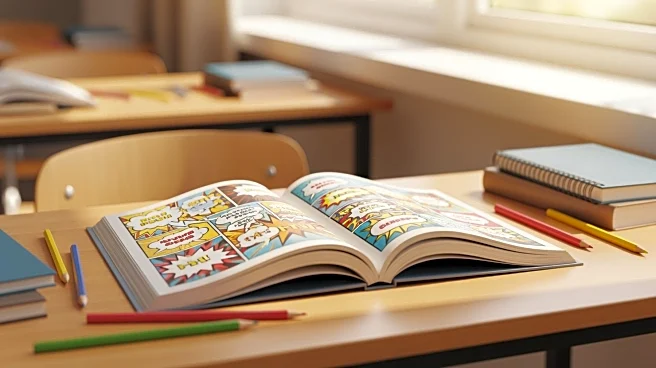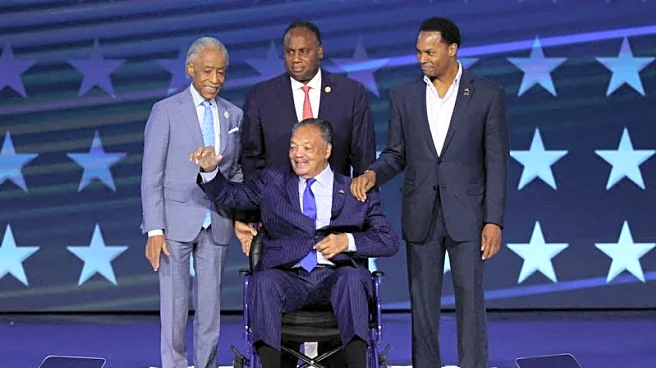What's Happening?
Teachers and librarians are increasingly incorporating comics and graphic novels into educational settings to engage students and enhance learning. Tim Smyth, a high school social studies teacher, uses comics to make lessons more relevant and relatable,
noting their representation of diverse identities. Smyth's students analyze comics to understand historical and social issues, and create their own comics on civil rights topics. Public librarian Heidi Colom uses graphic novels to develop vocabulary and phonics skills among ELL patrons, integrating them into STEAM lessons. Liz Blye, a middle school library media specialist, advocates for graphic novels as valid reading forms, emphasizing their ability to address complex topics and engage reluctant readers.
Why It's Important?
The integration of comics and graphic novels in education is significant as it provides an alternative method to engage students who may struggle with traditional texts. These resources offer visual literacy and representation, allowing students to see themselves in the material and fostering inclusivity. By addressing complex topics through graphic novels, educators can facilitate discussions on social issues in a non-threatening manner. This approach not only enhances critical thinking and close reading skills but also accommodates diverse learning styles, making education more accessible and engaging for all students.
















